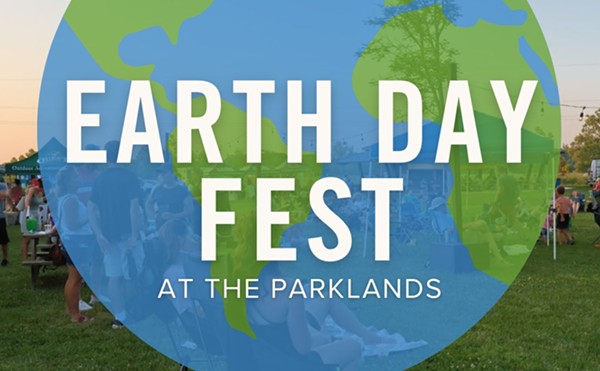“Hot Town,” LEO’s cover story last week, described how trees affect every aspect of life in the city, but how the city is allowing them to die or be destroyed, replaced, in some cases, with parking lots.
Trees are not a luxury item.
They are vital to the health and future of Louisville — “every bit as important to a city as water, sewer and transportation systems,” according to an expert in the story by James Bruggers, of insideclimatenews.org.
We cannot claim credit, but days after “Hot Town” ran, Councilman Bill Hollander notified us of a resolution that he and council members Brandon Coan and Cindi Fowler had filed that could be the first step toward fixing Louisville’s tree negligence.
Essentially, the resolution directs the Louisville/Jefferson County Planning Commission “to review the land development code regulations with regard to the preservation and planting of trees.”
You might be asking, “Didn’t the city just pass a tree ordinance?”
Yes they did.
However, it amounted to stuffing bubble gum into a crack in the Hoover Dam. This resolution admits as much, explaining that the new Public Tree Ordinance of 2017 “ ... does not deal with trees in the development context …”
Among other provisions, the ordinance requires property owners adjoining city rights of way to maintain those trees and get permits for their removal.
No mention of developers clear-cutting trees on private property.
A tree ordinance that deals with only public rights of way does little to stop Louisville from losing 54,000 trees per year — according to the 2015 Louisville Urban Tree Canopy Assessment. The same study also found that “trees provide approximately $330 million in annual benefits.”
One of the experts Bruggers cited in “Hot Town” determined that the heat island in Louisville, due to lack of tree canopy, likely contributed to 86 deaths in 2012. Restoring the tree canopy could reduce the heat in these exposed areas of town by as much as 5 degrees, which could cut heat-related deaths by 20 percent.
The cost of planting enough trees to prevent further loss of Louisville’s tree canopy — much less restore it to needed levels — may seem impossible. One estimate in the “Hot Town” was $1.6 billion over the next 40 years.
But here’s the catch: We don’t have an option whether or not to spend the money, because the alternative will be even more expensive, cost even more lives and diminish the quality of life in our city, making us less attractive to potential future residents and businesses.
Spending money on trees is like spending money on education — it’s an investment. It will return profits in the future. A serious, citywide effort to restore the tree canopy will save the city money it will otherwise have to spend on flood damage, sewer infrastructure and rising health costs. At the same time, trees increase property values, improving the economy.
Hollander and his cosponsors are doing right by starting this process (again). Louisville needs a sturdy tree ordinance, one with real teeth.
We are told the process could begin Thursday, Sept. 27, when the resolution would be heard at the Parks and Sustainability meeting, and heard by the full Metro Council as early as Thursday, Oct. 11. This would be followed by a public process before the Planning Commission, which is required by state law before amending the Land Development Code.
This means that right before the mayoral and council elections, council members may face a serious vote. Voters must demand candidates vote for this resolution, or promise to support significant changes to require that trees are preserved and restored.
The future of our city’s health, quality of life and economy depend on it.






